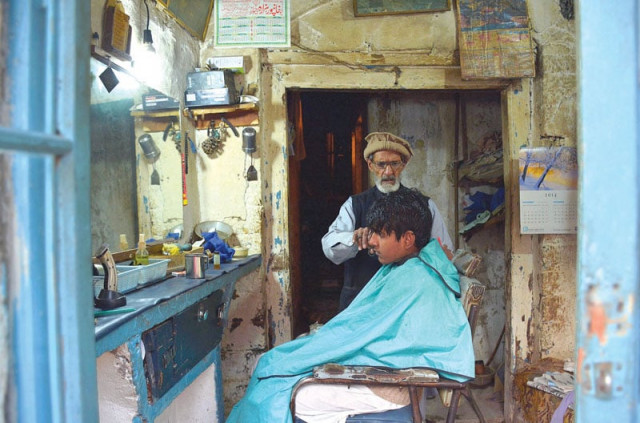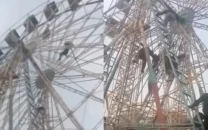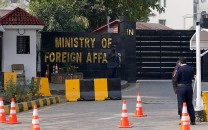Withstanding test of time: The master barber of Saidpur Village
Abdul Rashid has been in the haircutting business for over three decades.

Situated where model Saidpur Village meets the underdeveloped part of the original village, Abdul Rashid’s barbershop depicts that stark contrast in social strata and life of the over expanding capital city perfectly.

“I’m in the haircutting business since 1962 and have been running this shop since 1980,” said 76-year-old Rashid, pointing towards the sky-blue entrance door as he walked inside. He revealed that the village was called Fatehpur Baoli before the British Raj between 1858 and 1947 and was renamed after Pakistan came into being.
The little old-fashioned setup is an intriguing experience when one steps inside. Vintage tools including combs, razors and scissors are spread along the shelf and the decaying cement flooring spells history. A faded blue cape hangs behind the rusty mirror. The lone, ragged barber-chair recalls a bygone era and is witness to thousands of customers who sat on it during the past many decades.
“My forefathers settled here in 1707 and my family has been living here ever since” said Rashid. A majority of the population back in those days was Hindu and many people from Hazara moved here after the partition of the Indian subcontinent, he added. Rashid lives in the same neighbourhood with his wife and walks to work every morning.
Ahmed, a regular customer, sits on the barber chair calmly and avoids moving too much. “I’m 14 and have been coming here ever since I got my first haircut” he said with an affectionate smile.
“The villagers call Rashid ‘chacha (uncle) ‘the master barber’ since he understands our requirements really well,” he added.
Unlike regular barbershops where you hear beeping cell phones amid chitchat about life, politics and work, this quaint one-man setup, with faint sounds of rubab (traditional string instrument) being played in the neighbourhood, has a soothing effect on its customers. Despite his old age, Rashid moves his scissors swiftly like a master craftsman, affirming his experience and expertise.

“I have seen this village develop and change over the years. I’m glad that it serves as a tourist spot for many people visiting the capital but I miss the clean, crisp air and simple idyllic life when it was less frequented”, said Rashid with dismay and nostalgia in his eyes.
Rashid’s clientele mostly includes shopkeepers and residents of the village. “Most people come to this side to eat at restaurants or visit the museum”, he expressed.
The minute one steps out of the nameless, archaic shop into the hustle bustle of visitors to the surrounding eateries and souvenir shops, one feels like having stepped out of a time warp of several decades.
Published in The Express Tribune, December 29th, 2014.


















COMMENTS
Comments are moderated and generally will be posted if they are on-topic and not abusive.
For more information, please see our Comments FAQ